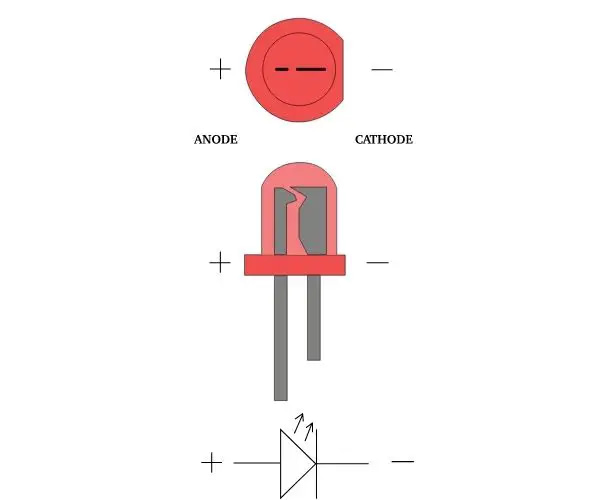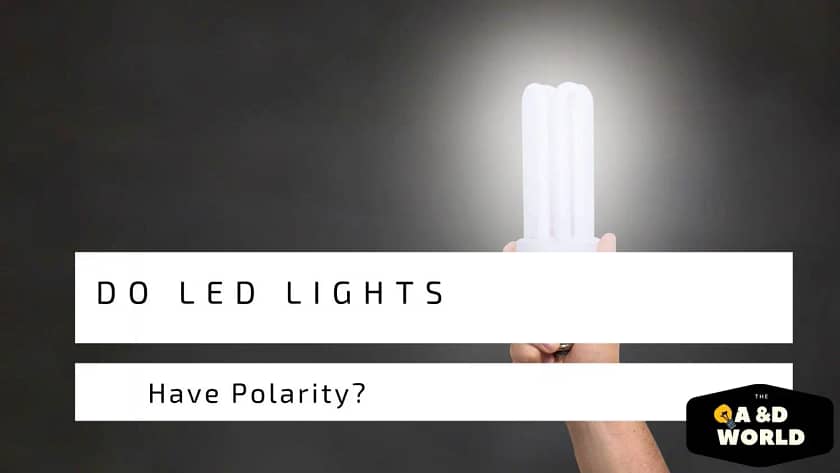LEDs are everywhere; you can find them on smartphones, laptops, cameras, etc. They comprise diodes that allow current to pass through them to produce light. LEDs have positive and negative sides and require a voltage supply for them to work. With LED lights, the positive side is called the anode, while the negative is the cathode.
So, yes LED lights are polarity sensitive. However, before we explore the question, let’s find out what is polarity in electricity. Polarity, in short, is the directional flow from one pole to another pole.
When the electric current is running through them, one pole will have more electrons than the other. The one with the least electrons has a positive polarity. Both (negative and positive) poles are connected by a wire: the electrons flow is called electric current. In this post, we will answer most of your questions on LEDs and the importance of polarity.
Are LED lights polarity specific?
Diodes let current flow in one direction with two terminals: the positive (anode) and the negative (cathode). Therefore, diodes must have marked pins so the current can flow in the proper direction. Regrading LEDs and their light-emitting diode, they are also polarized.
There are a few techniques to find out which pin is positive or negative with LEDs. Look at the legs of the pins. The longer leg is positive while; the shorter one is negative. With pins of the same size, check for the flat edge on the LED. The pin nearest to the flat edges is negative.
If there is still uncertainty, look at the plates inside. If the plate is on the thinner side, it is positive, whereas the negative side is thicker. Connecting your LED to a battery can help find which is negative or positive. Allow the LED pin legs to touch the battery terminals; you will notice symbols on them. With the proper arrangement, the LED will light up if not reverse the pins.
How do you tell if a LED is positive or negative?
Below will help you identify LED’s positive or negative sides in easy-to-read points.
- Look at the length of the legs: the longer side is positive, and the shorter leg is negative.
- The lead next to the flat side of the LED is negative, and the other one is positive.
- Inspect the metal plate inside the LED: the bigger plate is connected to the negative lead, whereas the smaller one is positive.
- Use a multimeter. Your LEDs will light up if the red probe touches the positive and the black probe on the negative.
What Happens If You Wire LED Lights Backwards?
Now we know LEDs are polarised and only operate when they are in their proper terminals. But what happens when they are wired backward? In essence, the LEDs will not receive any electric current, so they will not light up. There will be no long-term damage to your fixture. Simply correct the polarity, and your LEDs will light up again.
In cases with wrong polarity and a high voltage supply, your LEDs can experience open circuit failure or no light emission even after reversing the pins. Sometimes you’ll notice physical damage after incorrect polarity damage, like a burn or overheating. While others show no visible signs.
Are 12 volt LED lights polarity sensitive?
Yes, 12V LED lights are polarity sensitive and need to be wire correctly for current to flow and your bulb to light up.
What is the positive side of an LED symbol?

To Sum
LEDs are very polarity sensitive and will not work if they are wired backward. The best thing you can do is reverse the wiring, and your LED will light up. With high voltage, the damage that occurs can destroy your bulb. Thus, look for the signs like different leg lengths or any of the others mentioned above.





